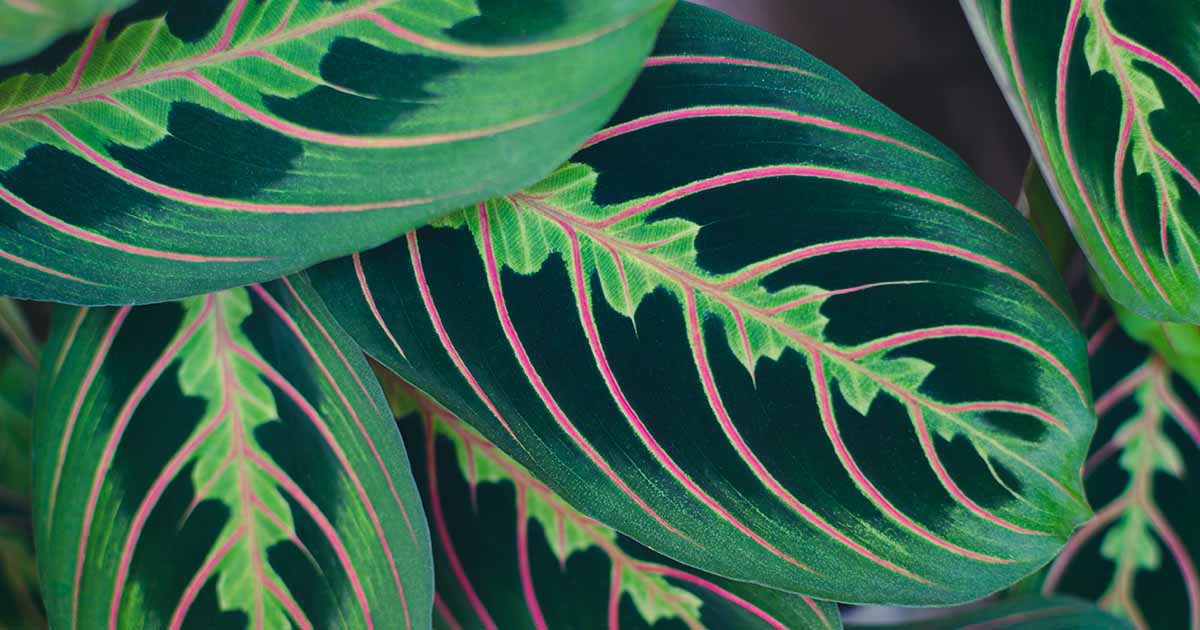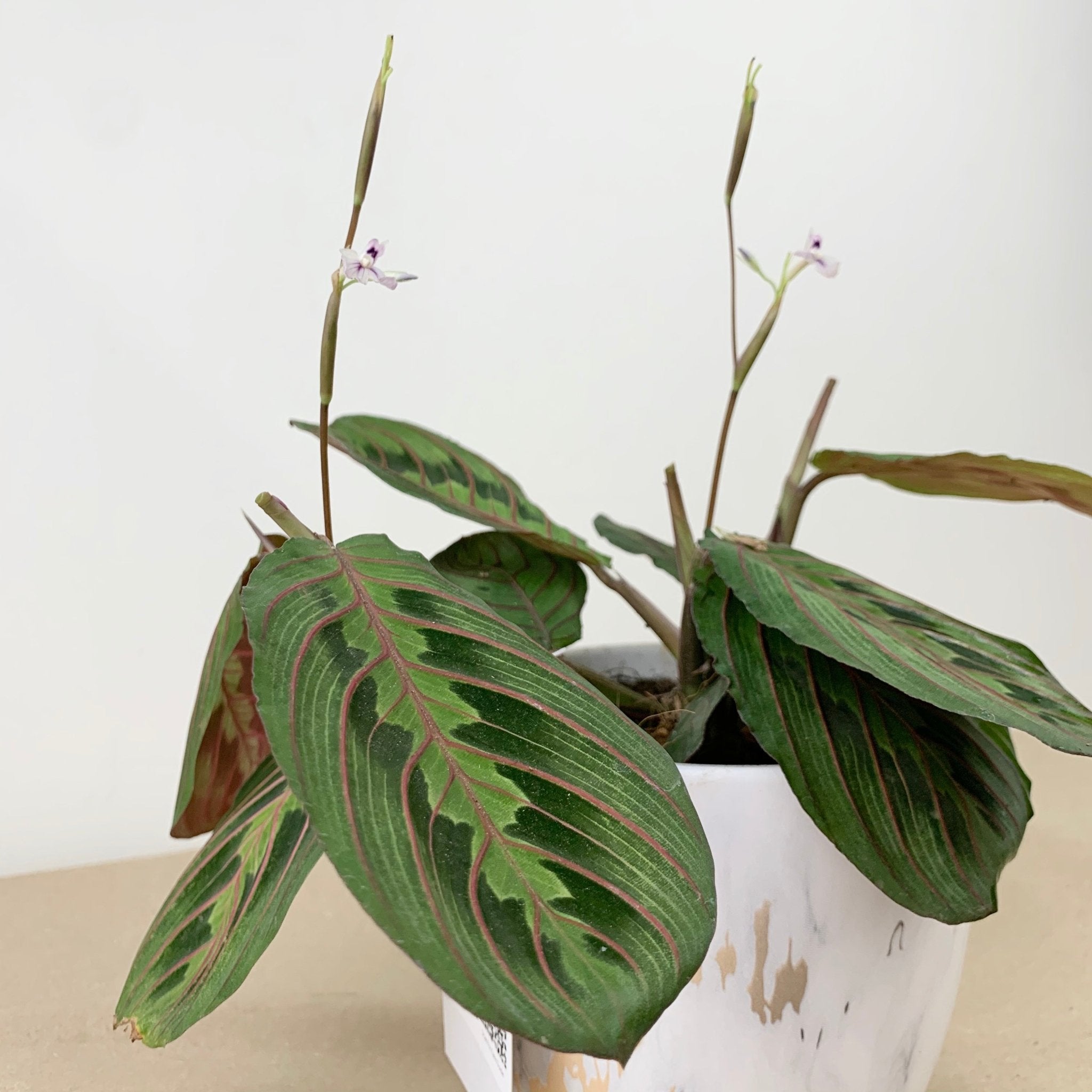Unveiling the allure of the red veined prayer plant, this article delves into its captivating characteristics, meticulous care requirements, and inspiring decorative applications, offering a comprehensive guide to incorporating this botanical marvel into your living space.
Native to the tropical rainforests of South America, the red veined prayer plant (Maranta leuconeura) captivates with its vibrant foliage adorned with intricate red veins that resemble intricate artwork. Its unique prayer-like leaf movement adds an element of dynamism, as the leaves fold upwards at night, resembling hands clasped in prayer.
Care and Maintenance of the Red Veined Prayer Plant

The red veined prayer plant, with its striking foliage and unique movement, is a popular choice for indoor plant enthusiasts. To ensure its health and longevity, proper care and maintenance are essential. This guide provides detailed instructions on watering, fertilizing, repotting, light requirements, and common problems to avoid.
Watering
Water the red veined prayer plant when the top 1-2 inches of soil feel dry to the touch. Avoid overwatering, as this can lead to root rot. Use lukewarm water and allow the excess to drain from the pot.
Fertilizing
Fertilize the red veined prayer plant every 2-3 weeks during the growing season (spring and summer) with a balanced liquid fertilizer. Dilute the fertilizer to half strength and apply it to the soil according to the manufacturer’s instructions.
Repotting
Repot the red veined prayer plant every 2-3 years, or when it becomes rootbound. Choose a pot that is 1-2 inches larger than the current one and use a well-draining potting mix.
Light Requirements
The red veined prayer plant prefers bright, indirect light. Avoid placing it in direct sunlight, as this can scorch the leaves. If the plant does not receive enough light, its growth may become stunted and its leaves may lose their vibrant color.
Common Problems
Overwatering: Overwatering can cause root rot, which is characterized by yellowing leaves, wilting, and mushy roots. Allow the soil to dry out between waterings to prevent overwatering.
Sunburn: Sunburn can occur when the plant is exposed to direct sunlight. Symptoms include brown or yellow patches on the leaves. Move the plant to a location with indirect light to prevent sunburn.
Propagation
The red veined prayer plant can be propagated through cuttings or division. To propagate through cuttings, take a 4-6 inch cutting from a healthy stem and remove the lower leaves. Place the cutting in a glass of water and wait for roots to develop. Once the roots are established, transplant the cutting into a pot with well-draining soil.
To propagate through division, carefully divide the plant into two or more sections, ensuring that each section has a healthy root system. Plant the divisions in individual pots with well-draining soil.
Decorative Uses and Styling Ideas for the Red Veined Prayer Plant

The red veined prayer plant, with its captivating foliage and unique movement, offers a versatile canvas for interior design. Its vibrant hues and graceful form make it an ideal choice for adding a touch of elegance and personality to any space.
Incorporating the Red Veined Prayer Plant into Interior Design
- Focal Point: Position the plant prominently in a room to draw attention and create a visual centerpiece. Place it on a pedestal or in a decorative planter to enhance its stature.
- Accent Piece: Use the plant to add a pop of color and interest to a neutral space. Place it on a bookshelf, coffee table, or side table to complement existing decor.
Pairing with Other Plants and Accessories, Red veined prayer plant
The red veined prayer plant can be paired with a variety of other plants to create visually appealing arrangements. Consider plants with contrasting foliage colors, such as ferns or succulents, to create a dynamic display. Accessories like woven baskets, metallic planters, or ceramic pots can complement the plant’s natural beauty.
Suitability for Different Room Settings
- Living Rooms: The red veined prayer plant brings a touch of the outdoors into living spaces. Its vibrant foliage can liven up a neutral color scheme or complement a bohemian or eclectic style.
- Bedrooms: The plant’s calming presence and air-purifying qualities make it a suitable choice for bedrooms. Place it near a window to allow natural light to illuminate its intricate patterns.
- Offices: The red veined prayer plant can add a touch of greenery and vitality to workspaces. Its unique movement and ability to adapt to low-light conditions make it a practical and aesthetically pleasing choice.
The red veined prayer plant, a beautiful addition to any home, is known for its unique foliage and ability to purify the air. However, it’s important to note that it’s not the only plant with these qualities. The ivy leaf toadflax plant , a close relative of the snapdragon, also boasts air-purifying properties.
While its leaves may not be as vibrant as those of the red veined prayer plant, its delicate flowers and trailing habit make it an equally charming choice for indoor spaces.
The red veined prayer plant is known for its striking red veins that run through its deep green leaves. Its botanical name, Maranta leuconeura, hints at the white veins that sometimes accompany the red ones. For those interested in expanding their knowledge of prayer plants, exploring the velvet elvis plant care can provide valuable insights into the care of these beautiful plants.
The red veined prayer plant, with its unique leaf patterns, remains a popular choice for adding a touch of greenery to any indoor space.
The red veined prayer plant, known for its vibrant foliage and unique leaf movement, can add a touch of tropical flair to any space. Its prayer-like leaves, which fold together at night, give it its distinctive name. While the red veined prayer plant is often grown in traditional pots, it can also be incorporated into creative planters like flag pole planters . These vertical planters, which resemble flag poles, provide a unique way to display plants and create a lush, vertical garden.
By suspending the red veined prayer plant in a flag pole planter, you can enjoy its beauty from all angles and create a captivating indoor or outdoor display.